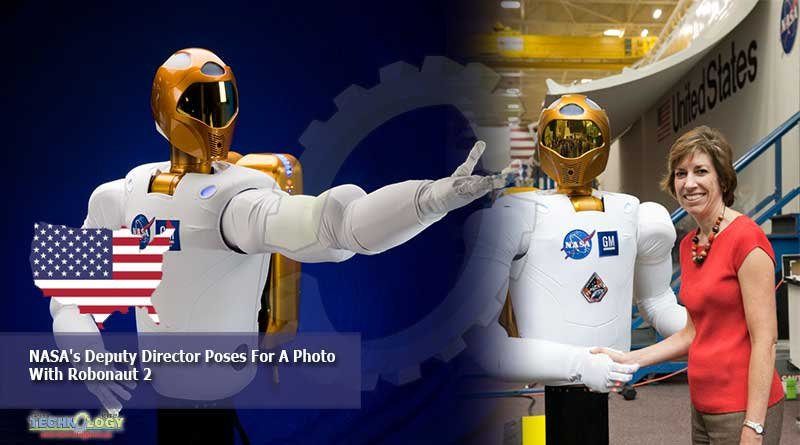NASA Johnson Space Center deputy director Ellen Ochoa poses for a photo with Robonaut 2 (R2) during media day in the Space Vehicle Mock-up Facility

Then-NASA Johnson Space Center deputy director Ellen Ochoa poses for a photo with Robonaut 2 (R2) during media day in the Space Vehicle Mock-up Facility on Aug. 4, 2010. R2 hitched a ride to the International Space Station with the STS-133. It was the first humanoid robot to travel to space and the first U.S.-built robot to visit the station. R2 will stay on the space station indefinitely to allow engineers on the ground to learn more about how humanoid robots fare in microgravity.
Ochoa became Johnson Center director in 2012 and retired from that position in 2018. She is veteran of four space shuttle flights and holds a doctorate in electrical engineering from Stanford.
What is a Robonaut?
A Robonaut is a dexterous humanoid robot built and designed at NASA Johnson Space Center in Houston, Texas. Our challenge is to build machines that can help humans work and explore in space. Working side by side with humans, or going where the risks are too great for people, Robonauts will expand our ability for construction and discovery. Central to that effort is a capability we call dexterous manipulation, embodied by an ability to use one’s hand to do work, and our challenge has been to build machines with dexterity that exceeds that of a suited astronaut.
Robonaut 2
The Robonaut project has been conducting research in robotics technology on board the International Space Station (ISS) since 2012 (more on R2 in the ISS). Recently, the original upper body humanoid robot was upgraded by the addition of two climbing manipulators (“legs”), more capable processors, and new sensors. While Robonaut 2 (R2) has been working through checkout exercises on orbit following the upgrade, technology development on the ground has continued to advance. Through the Active Reduced Gravity Offload System (ARGOS), the Robonaut team has been able to develop technologies that will enable full operation of the robotic testbed on orbit using similar robots located at the Johnson Space Center. Once these technologies have been vetted in this way, they will be implemented and tested on the R2 unit on board the ISS. The goal of this work is to create a fully-featured robotics research platform on board the ISS to increase the technology readiness level of technologies that will aid in future exploration missions.
One advantage of a humanoid design is that Robonaut can take over simple, repetitive, or especially dangerous tasks on places such as the International Space Station. Because R2 is approaching human dexterity, tasks such as changing out an air filter can be performed without modifications to the existing design.
Another way this might be beneficial is during a robotic precursor mission. R2 would bring one set of tools for the precursor mission, such as setup and geologic investigation. Not only does this improve efficiency in the types of tools, but also removes the need for specialized robotic connectors. Future missions could then supply a new set of tools and use the existing tools already on location.
Development
R2 was designed and developed by NASA and General Motors with assistance from Oceaneering Space Systems engineers to accelerate development of the next generation of robots and related technologies for use in the automotive and aerospace industries. R2 is a state of the art highly dexterous anthropomorphic robot. Like its predecessor Robonaut 1 (R1), R2 is capable of handling a wide range of EVA tools and interfaces, but R2 is a significant advancement over its predecessor. R2 is capable of speeds more than four times faster than R1, is more compact, is more dexterous, and includes a deeper and wider range of sensing. Advanced technology spans the entire R2 system and includes: optimized overlapping dual arm dexterous workspace, series elastic joint technology, extended finger and thumb travel, miniaturized 6-axis load cells, redundant force sensing, ultra-high speed joint controllers, extreme neck travel, and high resolution camera and IR systems.
The article is originally published at NASA.
